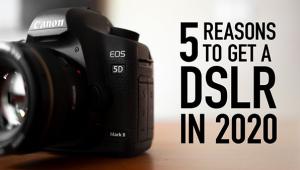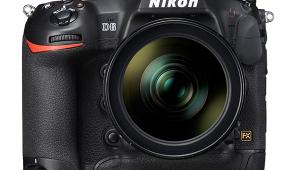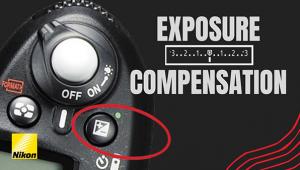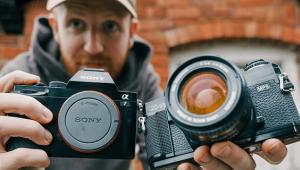Great blog! I really love how it is easy on my eyes and the information are well written. I am wondering how I might be notified whenever a new post has been made. I have subscribed to your rss feed which really should do the trick! Have a nice day!
Renaissance Artist - Raphael
Cameras; More 3D Digital Than Film Cameras Page 2
Leica’s M9 Titanium, designed by Sr. de’Silva of Volkswagen, is a fascinating “concept camera” in the way that “concept cars” at leading automobile shows are fascinating. Would you use one for everyday shooting? Probably not, the more so as the automobile designer did not appear to understand what cameras are for: namely, taking pictures. The accessory shoe was filled in; there was no cable release socket on the shutter button; and the red frame lines in the viewfinder light up only when you touch the release button. On the other hand, would you like to own one? Well, that’s another question… Somebody who does own a presentation model, with the serial number 4,000,000, is Steve Sasson, lately of Kodak. He is generally (and justly, as far as we can see) credited as the inventor of digital still photography in its current form, and is quite fascinating to talk to.
Rather more important in the long run is probably the highly authoritative rumor, fed to us by ALPA, that in a year or 18 months there will be a CMOS “large format” chip (medium format in film terms, of course) with Live View. This will make it very much easier to get sharp focus with professional digital cameras using interchangeable backs. At present, the only options for maximum quality are either “focus bracketing” (taking three shots at minutely different focus settings) or having the back either custom-matched to the camera or built in permanently. With interchangeable backs, errors as big as 0.1mm are apparently quite common. This may not sound like much—it’s only 1⁄250”, after all—but if you see the results of focus bracketing you can see how much difference it makes: a LOT. Having your digital back shimmed to match the camera is an expensive and painstaking operation, but worth it. With Live View, this will still be highly desirable, but no longer all
but essential.
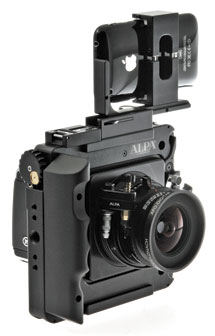 |
|
|
As ALPAs are commonly used with high-end digital backs, we were much inclined to give credence to the CMOS rumor, and as they pointed out, Live View will make it much easier to use their new STC on location, quite apart from studio applications with it and all their other cameras. The new camera adds back movements to the existing TC (“Travel Camera”) to create the STC (“Stitching Travel Camera”).
As well as the new STC, they had a bracket to hold an iPhone in place of the conventional viewfinder. It was frankly silly, but quite amusing, and we have since learned from another manufacturer that an iPhone viewfinder will be incorporated in one of his forthcoming cameras. We cannot say more, as we are under a Non-Disclosure Agreement (NDA). Cambo redesigned their wide-angle ALPA competitor, the Wide Compact Digital, and brought out an anniversary model with rosewood grips, à la ALPA. It’s much prettier than the standard version, and also feels nicer.
Digital backs cram in more and more megapixels, but there’s no point in enlarging upon this because by the time you read this there will probably be yet another improvement. We were quite impressed by Sinar’s new eVolution86 H back (8000x6000, 48 megapixels, hence the name) but with Leaf promising 80 megapixels on the Aptus-II 12 it is hard to see where the race will stop.
Or, of course, you can use another approach: stitching, as already noted with the STC. Stitching is one of the many stated advantages of the GFAE, with which we started this report. It is a view camera with all-microprocessor controls via a computer and stepper motors. Once you understand it, you can do all the tricks that an experienced large format user can do in terms of holding receding planes in focus, using rise and fall, and so forth, and you can save all your camera settings so you can choose “presets” for a given subject. The example they gave was someone specializing in watch photography; another we thought of was a friend who specialized in glassware.
Because of the design, you can leave the front standard where it is, and move the back standard through quite a large plane, allowing very accurate stitching of several (let us say) 80-megapixel Leaf images. This is not merely “as good as” large format film: it’s actually better. You can also do bracket focus automatically: look back a couple of paragraphs and you’ll see why this is needed. On the other hand, the words once you understand it are important. To anyone who already knows how to use (say) a Linhof Technikardan or a Gandolfi Traditional, there may be a long, steep learning curve before the GFAE is as quick or intuitive as a more traditional camera.
3D
After this, we’re firmly outside the mainstream. Well, sort of, unless you count 3D as part of the mainstream—which at this photokina, it almost seemed to be. Ewa-Marine makes underwater covers, and when we asked them what was new, they said, “We’re working on a 3D housing.” We were all trying not to laugh, and when we said, “Well, you would be, wouldn’t you,” they broke down first.
There was lots of 3D video, normally giving the viewer a (by no means easy)choice between a headache and seasickness: polarized anaglyphs were the normal order of the day, though a few used the old red-green anaglyph glasses. If you want to make horror films, they’re great. It doesn’t matter what the subject is: it’ll look like a horror film anyway. But some used the same technologies for still photography, where at least you don’t have to follow the movement.
 |
|
|
There was, however, a really original 3D concept from Minox: a four-lens camera which shot four separate images and synced them into a short video loop which bobbed slowly up and down on the screen: a still image, but one where you could see “behind” the foreground subjects as the apparent viewpoint moved up and down. You don’t need special glasses or anything. Just a resistance to seasickness, at least after the first couple of loops.
There was also a lot of panoramic stuff, from multi-camera setups via Seitz’s revolving Roundshots and a new digital Horizon/Horizont to a French three-lens 360? camera. The Roundshot now has a much faster and more powerful motor and enough precision for photogrammetry using a single pixel as a laser point. Incredibly, it’s very close to the price of the older, slower, less precise version, which admittedly was very expensive to begin with. The higher tracking speed also means you can do HDR with it more easily (less subject change between shots).
The Horizon D-L3 (or Horizont) is a joint venture between the well-established Italian firm of Silvestri and the even longer-established Krasnogorsky company that made the old swing-lens Horizont (which appears still to be available). A picture explains it better than anything else could: three lenses arranged on the inside curve of a crescent-shaped camera body. They cover 120? horizontally and 45? vertically: the same format ratio as the 24x65mm film version. It’s effectively three 5-megapixel cameras, with the images auto-stitched in the camera. It’s still in prototype form—the one on the Krasnogorsky stand worked, but the one on Sr. Silvestri’s didn’t because the factory had fried the imaging chips the day before the show. It should be vastly more reliable than the film version ever was, and we look forward to receiving one for test.
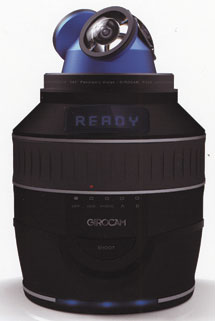 |
|
|
Another three-lens camera was the French-made Girocam, but this one does 360? simultaneously, with no scanning. As the inventor put it, “you can put it in the middle of a circle of children holding hands; get them all to jump in the air; and take a picture of all of them while they are in the air.”
The way they achieve this is via three fisheye lenses and three 10-megapixel sensors, with the fisheye distortion and stitching sorted out in camera. It looks like a very large hand grenade whose mother was frightened by a Martian, but if it works—this was yet another prototype—it should be brilliant, and not expensive at well under $2000 at the exchange rates prevailing in September 2010.
It almost brings tears to our eyes to say it, but film cameras are now so far out of the mainstream that we saw only one significant introduction, the long-awaited Fuji GF670W. This is the same basic body as the current folding GF670, introduced at last photokina with an 80mm f/3.5 lens, but now fitted with a rigid front cone bearing a 55mm f/4.5 Fujinon. It’s rigid for two certain reasons, and one probable. First, the space savings would be negligible with a folder. Second, film/lens alignment is more demanding with the wide-angle lens, and a rigid body is more reliable. Third, it’s probably only going to sell in tiny quantities, and it’s much quicker, cheaper, and easier to clag a rigid cone on the front of an existing body than to design a new folder from scratch.
Like the folder it can be used as either 6x6 or 6x7cm (12-on and 10-on), with full manual control or an autoexposure (Aperture-Priority) option. The only one on display was on the Fuji stand, sealed firmly under glass, which explains the indifferent quality of our picture: at the Voigtländer stand, the helpful young lady explained, with disarming honesty, that the Voigtländer version simply wasn’t ready yet. It comes to something when there are more new three-lens digital panoramic cameras at photokina than new rollfilm cameras.
Fuji did however have a “baby” instant camera on the stand, producing 46x62mm images on 54x86mm paper (21⁄8x33⁄8”). This is an “integral” system as pioneered decades ago by Polaroid’s SX-70. In an era when digital cameras and pocket-sized printers might seem to have rendered such technology irrelevant, it’s cheering to see how people are still fascinated to see a piece of shiny white plastic slowly turn into an image in front of their eyes. Mainstream? No. Fun? Yes.
 |
|
|
To end on a happy if expensive note, DHW Fototechnik GmbH is the successor company to Franke & Heidecke, and they are not only continuing production of the HySix digital/film hybrid pro SLR: they are also continuing the three classic TLRs (wide, standard, and tele) and the Rollei 35, completely made in Germany, with your choice of finish at no extra cost. But unless you’re very, very rich, sit down before you read the price of a new Rollei 35. It’s 4300 euros, which is around $5800. And you may have thought that the Leica M9 was expensive…
Manufacturers/Distributors
ALPA: www.alpa.ch
Bron Imaging Group (Sinar): www.bronimaging.com
Cambo: www.cambo.com
Canon: www.canon.com
Casio: www.casio.com
DHW Fototechnick GmbH: www.dhw-fototechnik.de
Ewa-Marine: www.ewa-marine.com
Fuji: www.fujifilm.com
GFAE: www.gfae.ch
Giroptic (Girocam): www.girocam.com
Leaf: www.leaf-photography.com
Leica: www.leica-camera.com
Minox: www.minox.com
Nikon: www.nikon.com
Olympus: www.olympus.com
Pentax: www.pentax.com
Phase One (Leaf): www.phaseone.com
Photo Village: www.photovillage.com
Ricoh: www.ricoh.com/r_dc/de/
Samsung: www.samsung.com
Seitz: www.roundshot.ch
Silvestri S.r.l. (Horizon): www.silvestricamera.com
Stephen Gandy’s CameraQuest: www.cameraquest.com
Voigtländer: www.voigtlaender.de; distributed by Photo Village (East Coast) and Stephen Gandy’s CameraQuest (West Coast)
- Log in or register to post comments







